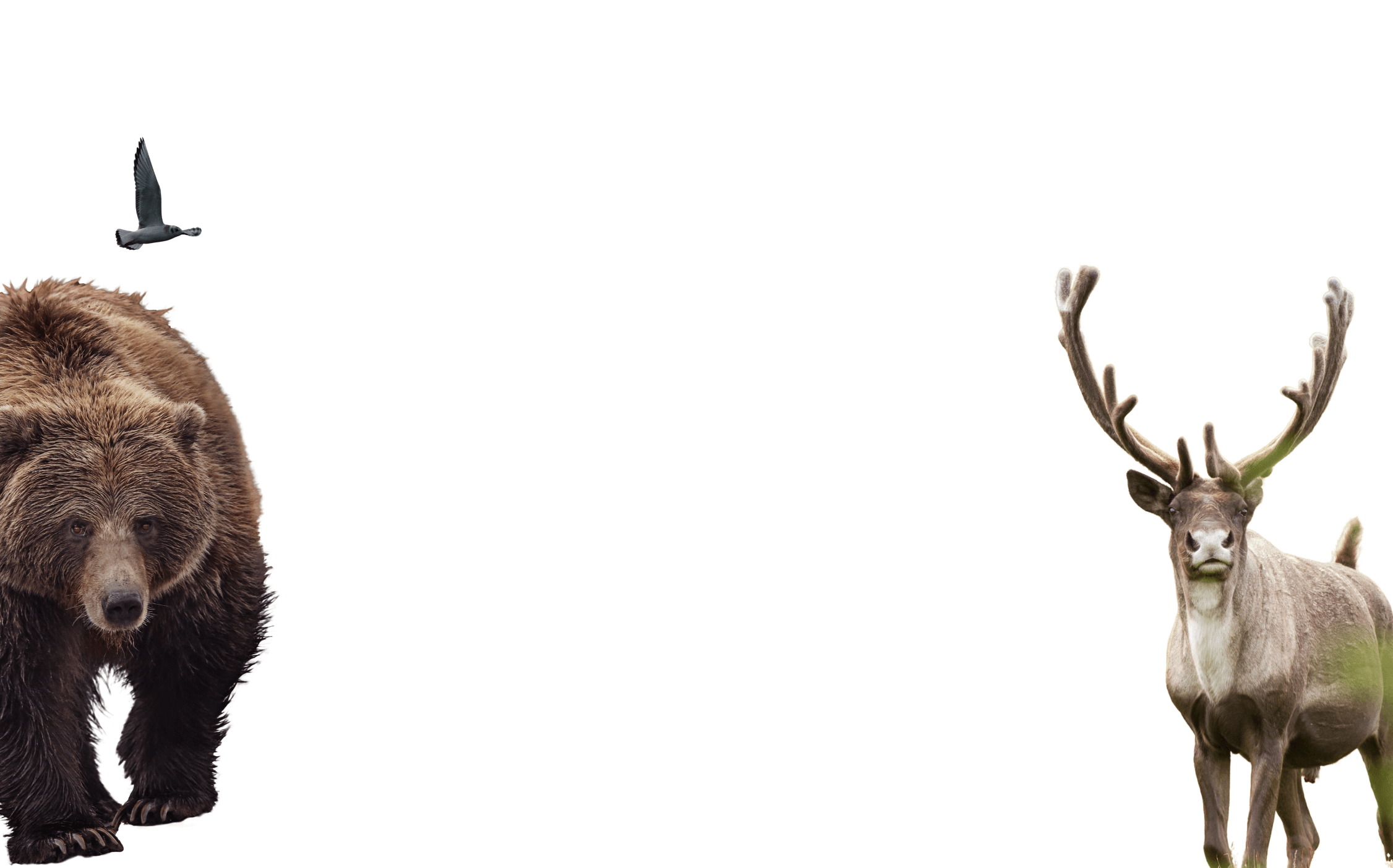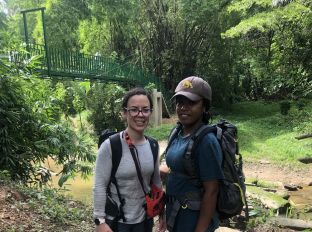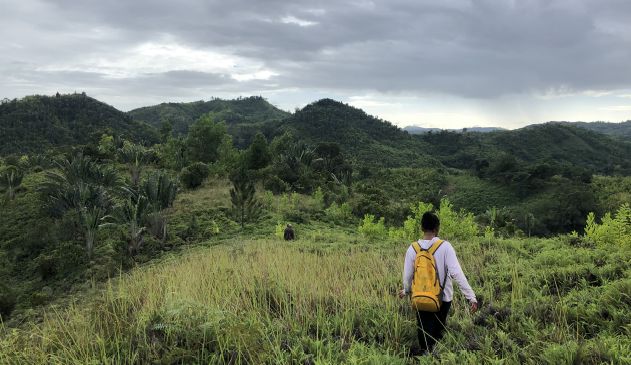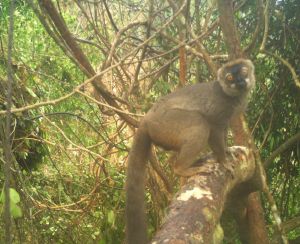
To Madagascar and Back: How my time studying lemurs — and the challenges that came with it — shaped me as a conservation specialist
May 26, 2025
- •
- •
- •
Joining AWA is an exciting new chapter in my career.
By Pamela Narvaez-Torres
Read the PDF version here.
It was during my second — and last time — being in Madagascar that I climbed through wind-torn jungle trees after a cyclone had hit just days before. As I carefully picked which branch to grab next, it dawned on me how much climate change will impact the future of many species-at-risk.
I haven’t always been a conservation specialist.
Before setting my roots at Alberta Wilderness Association, I spent 10 years in and out of Madagascar as part of my master’s and PhD work.
Since I began my research as a graduate student at the University of Calgary, I have focused on understanding how different types of disturbance, mainly caused by humans, impact lemur communities in southeast Madagascar. Through both my master’s and now my PhD research, working in a highly disturbed ecosystem has shaped me as an ecologist, allowing me to analyze the complexities of ecosystems and the intricate ways species respond to environmental change.
Setting the scene
My research is based in Madagascar, an island country in the Indian Ocean, off the east coast of Africa. It has about 30 million people, with over 80 percent living below the poverty line of $2.15 USD per person per day. Lemurs are the endemic primates of Madagascar, meaning that the over 110 species described so far originated on the island and are found nowhere else in the world.
Sadly, at least 17 species have gone extinct in the last 1,000 years due to human activities, and the remaining species are among the most threatened mammals in the world.
It is estimated that the ancestor of most modern lemur species arrived on the island around 65 million years ago. At that time, the island had relatively few mammal species, allowing lemurs’ ancestors to evolve into a wide variety of species in a process called adaptive radiation. This evolutionary path has produced extraordinary diversity: for example, the extinct Archaeoindris fontoynontii (there isn’t even a common name for this species!) was roughly the size of a gorilla, weighing around 160 kilograms, while the tiniest living lemur, Madame Berthe’s mouse lemur, weighs just 33 grams. Today, lemurs come in all shapes and sizes, from the child-sized indri to the tiny mouse lemurs. Some have evolved remarkable traits, like the aye-aye’s ever-growing rodent-like teeth or the bamboo lemurs’ ability to consume cyanide-containing bamboo daily without harm.
Madagascar is a global biodiversity hotspot, home to an incredible number of endemic plants and animals. Unfortunately, much of its forest cover has been lost, pushing many species toward extinction. Most of my research has taken place in the southeast of Madagascar, on the forest fragments near the Kianjavato commune. Over the last 70 years, this area has lost around 90 percent of its original forest cover, and the forests that remain are home to nine species of lemurs, each with unique characteristics. Four species are nocturnal, four are cathemeral (active during both day and night), and one is diurnal. Among these species is one of the smallest lemurs, Jolly’s mouse lemur, as well as the Greater bamboo lemur — one of the few animals capable of surviving on cyanide-rich bamboo.

Pamela, left, and Mirana Jeynne Evah Rahariniaina after a hard day of work in the forest. Photo © C. Razafindravelo
Trip one
In 2016, during my first trip to Madagascar for my master’s research, I spent six months in the field collecting data on lemur abundance and diversity. My goal was to understand how human disturbances affect lemur presence and abundance: do areas with more disturbance have fewer individuals and fewer species? And conversely, do areas with less disturbance support more individuals and more species?
My research involved daily hikes through hilly forests to conduct lemur surveys. My team included four local technicians from Kianjavato and a Malagasy master’s student. Together, we surveyed lemurs using 500-metre-long transects. These are straight paths through the forest created by researchers and technicians using a GPS unit and tape measures to systematically record wildlife observations. Over my six months, we repeatedly walked 35 transects across five forest fragments. Each day, we would travel to one of these fragments and walk two or three transects, scanning the treetops for lemurs. Since some species are nocturnal, we conducted surveys both during the day and at night.
At first glance, this might sound like a peaceful nature walk, but it was far from it! First, this is a tropical forest, so it was hot and humid. Second, the terrain was extremely hilly, making every survey a serious workout. Third, Kianjavato only has one road, and the villages have been built along it. Over time, deforestation has expanded outward from the road as people clear land for agriculture and other uses. As a result, most forest fragments are now far from the road, making access difficult. Surveying lemurs wasn’t just about walking 500 metres on a transect; it also meant hiking up to 10 kilometres just to reach the site — climbing steep hills, crossing multiple creeks, and then doing it all again on the way back. And, of course, we had to repeat this day after day, for six months, often working both day and night! It was exhausting work, and we didn’t always see lemurs on the surveys, but just being in the forest where they live, listening to the sounds of nature, and spotting other wildlife was something truly special.
Each survey lasted at least 30 minutes, longer if lemurs were detected. When we spotted a lemur, we recorded the species, group size, tree species, height in the canopy, and other relevant data. Once the day surveys were completed, we hiked back to the road to catch a ride to the field station. In six months of data collection, we observed eight of the nine species, only missing the elusive aye-aye.
In Kianjavato, I lived at the Kianjavato Ahmanson Field Station (KAFS), run by the Madagascar Biodiversity Partnership, a local NGO. In 2016, accommodation was basic — there was no running water or electricity, though solar panels allowed us to charge equipment. We slept in tents inside huts and shared a latrine. By 2019, a rainwater-operated toilet had been installed, and by 2022, multiple toilets were available throughout the field site.
With my master’s research, I provided insights into lemur communities in disturbed forests, reinforcing my interest in conservation and the urgent need to study threatened species. Building on this foundation, my PhD research shifted to using camera traps instead of transects, allowing for a broader and less invasive method of monitoring wildlife. I also expanded my study area to include Ranomafana National Park (RNP), a protected area about 70 kilometres west of Kianjavato, to compare lemur communities in degraded and intact forests.
Trip two
In 2019, I spent four months in Madagascar testing a camera trap network with a master’s student. Camera trapping has long been used in wildlife research, but most studies have focused on terrestrial species. However, the lemurs I study in Kianjavato spend most of their lives in the trees, making ground-based cameras ineffective for studying them. In recent years, researchers in tropical forests worldwide have adapted camera trap technology for use in the canopy, allowing for better monitoring of arboreal mammals and birds.
Our goal was to test whether camera traps placed high in the trees could effectively record the nine lemur species in the area. Our daily routine was similar to line transect work — wake up, eat breakfast, hike to our destination. However, camera trapping required much heavier backpacks filled with tree-climbing gear, cameras, batteries, and climbing ropes. Once we reached the desired location, we selected a tree, conducted a risk assessment, and set up the climbing rope. After climbing around eight metres, we installed a camera up on the tree, placed another at ground level, and conducted vegetation and disturbance surveys before moving to the next location.
By the end of the season, we were so happy with the results — our cameras had captured all nine lemur species, showing that arboreal camera trapping was more effective than line transects.
A delayed return, and the cyclones
I planned to return to Madagascar in 2020, but the COVID-19 pandemic delayed my fieldwork until 2022. In January 2022, I traveled back with two other graduate students and a research assistant from the University of Calgary. After a 28-hour journey to Madagascar’s capital, Antananarivo, we underwent COVID-19 testing and isolation before meeting our Malagasy research assistants and heading to Kianjavato.
Although this was my third trip to Madagascar, it was the first time I was there during the main part of the rainy season, so I anticipated some challenges. However, I was not expecting just how different this field season would be. My research assistant, Mirana, and I met our team of eight local technicians and began installing camera traps in January, just like I had done in 2019.
By early February, reports emerged of an approaching category 3 cyclone, Batsirai. After only nine days of work, we packed our tents and evacuated to Centre ValBio (CVB), a field station located in RNP.
At CVB, other graduate researchers had also gathered to wait out the storm. We closely monitored weather updates, hoping Batsirai would weaken or change course. Unfortunately, it made landfall with sustained winds of 165 kilometres per hour and gusts up to 230 kilometres per hour. We had to stay at CVB for five days until the roads were cleared of landslides and fallen trees.
We returned to KAFS, witnessing widespread devastation. Many community members lost their homes and given that typical houses in the area are made from wood with woven palm leaves for roofs, the destruction was severe. KAFS sustained mainly vegetation damage, but the forest fragments were unrecognizable. When we resumed work, navigating the landscape was far more challenging due to fallen trees and thick debris. Even though I considered myself an experienced hiker, I got heat exhaustion on my first day back in the forest after a pretty easy hike.
Tree climbing became even riskier — many trees that remained standing were unstable or had broken branches, so I had to carefully assess each tree before climbing. The team and I worked for a few more days, and I spent some days teaching them tree climbing before heading back to CVB for a tree-climbing workshop I was leading. Over five days, I trained local technicians on tree climbing techniques to install camera traps for a long-term research project in RNP. This project is also part of my PhD and will help us compare lemur responses to disturbances in protected versus unprotected areas.
Mirana and I then returned to KAFS, only to face yet another evacuation — this time due to Cyclone Emnati, a category 4 storm heading our way. We were evacuated again the next day, and Emnati made landfall on the day after. Fortunately, by the time it reached Madagascar, it had weakened to a category 1 cyclone. This time, we only had to stay at CVB for four days. The next day, we were back in the field, retrieving the cameras we had managed to set before the first cyclone struck. We also took the opportunity to assess cyclone-related disturbances in the vegetation, recording the number of fallen trees, broken trunks, and snapped branches across our survey plots.
Thankfully, the remainder of my time in Madagascar was uneventful — aside from multiple bouts of what felt like heat exhaustion. The team adapted quickly to the disruptions, and we successfully recovered all our cameras while conducting additional vegetation surveys.
Despite the challenges posed by the cyclones — including fallen trees that had cameras mounted on them — the cameras still managed to capture all nine lemur species that inhabit the Kianjavato forests. Our vegetation surveys revealed that at least 77 percent of the trees had suffered substantial damage, ranging from fallen leaves and broken branches to fully uprooted trees.
This experience deeply shaped me as a field ecologist. It gave me a firsthand look at the potential effects of climate change — not just on wildlife but also on the human communities that depend on these forests. Cyclones are not new to Madagascar, but climate change is expected to increase both their frequency and intensity, placing additional pressure on local communities that rely on forest resources, as well as on the already fragile ecosystems and the wildlife that depend on them.
My work in Madagascar over the past 10 years has taught me far more than the ecological interactions between animals and vegetation or how lemurs respond to disturbances. It has shaped me as both a scientist and a conservation advocate. The impacts of climate change, while varying across the globe, are inevitable. How we respond will determine the future of both people and wildlife.
Joining AWA is an exciting new chapter in my career. I am passionate about conservation and eager to bring my expertise to this incredible organization, which has been working to protect Alberta’s wilderness for 60 years. I look forward to contributing to AWA’s efforts to protect our province’s wilderness and collaborating with colleagues, other ENGOs, and the broader community in this mission.

